Name Gidugu Ramamoorty | Role Writer | |
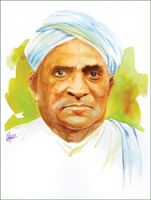 | ||
Full Name Gidugu Venkata Ramamurthy Other names Rao sahib, Kalaprapoorna Died 22 January 1940 (aged 76) Srikakulam Similar Gunturu Seshendra Sarma, C Narayana Reddy, Viswanatha Satyanarayana | ||
Gidugu Venkata Ramamurthy (1863-1940) was a Telugu writer and one of the earliest modern Telugu linguists and social visionaries during the British rule. He championed the cause of using a language comprehensible to the common man (‘Vyavaharika Bhasha’) as opposed to the scholastic language (‘Grandhika Bhasha’).
Contents
- Gidugu Venkata Ramamurthy A Special Story TeluguISM
- Early life
- Fight for Vyavaharika Bhasha
- Works
- Honors
- Research on Gidugus Work
- References

Gidugu Venkata Ramamurthy | A Special Story | గిడుగు వెంకట రామ్ మూర్తి కథ || TeluguISM
Early life
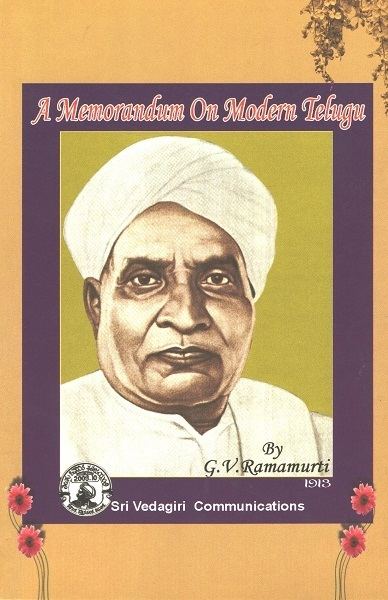
Gidugu Ramamurthy was born at Parvatalapeta, Srikakulam near Vamsadhara River on the border of Orissa, His father Veeraraju worked as revenue inspector and died when Ramamurthy was just 12 years old. It was a struggle for him to survive. He studied privately and passed his matriculation, staying in his sister’s house and began his life as a teacher in Gajapati Maharaja School, Parlakimidi for 55 years.

Albeit being a historian as well, Ramamurthy was unable to read ‘Sasanas’ on stone tablets clearly. To understand them he studied books that were imported by Vizianagaram Maharaja’s son Kumara Raja. He studied various language scripts and after deciphering the ‘Sasanas’ he wrote books on languages and scripts.
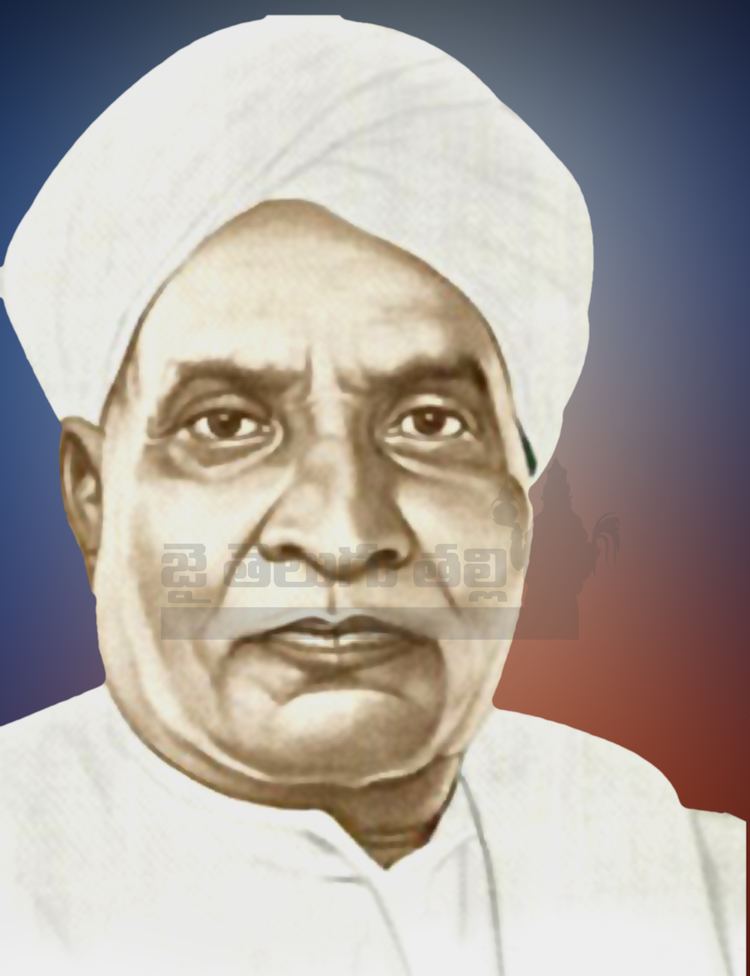
Ramamurthy had studied many languages and comprehended the philosophy of language. He pleaded for lucidity in text books. In his time there was only a poetic approach and never was a prosaic treat. He launched a monthly titled Telugu to drive his point.
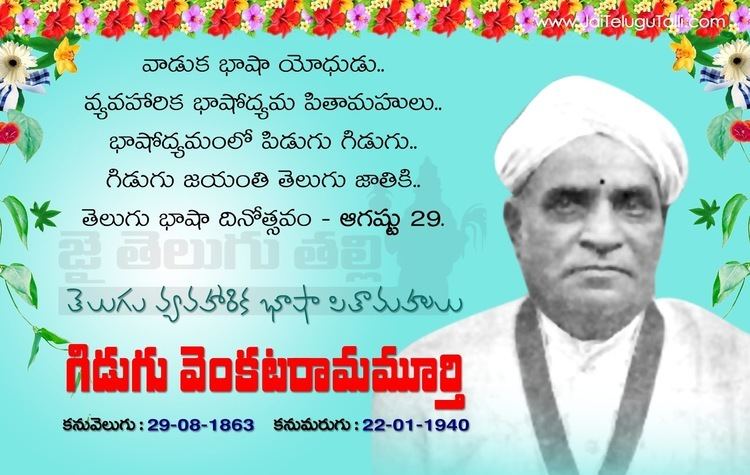
Gidugu gave a social base to Telugu literature and rendered services to the tribals, especially the Savaras, in Parlakimidi area of Srikakulam agency area and tirelessly worked for the development of tribal languages. He gave Savara language a script and prepared lexicons. During his research for Savara language, he had to travel in the forests resulting in excessive use of quinine due to which he became deaf.
Fight for ‘Vyavaharika Bhasha’
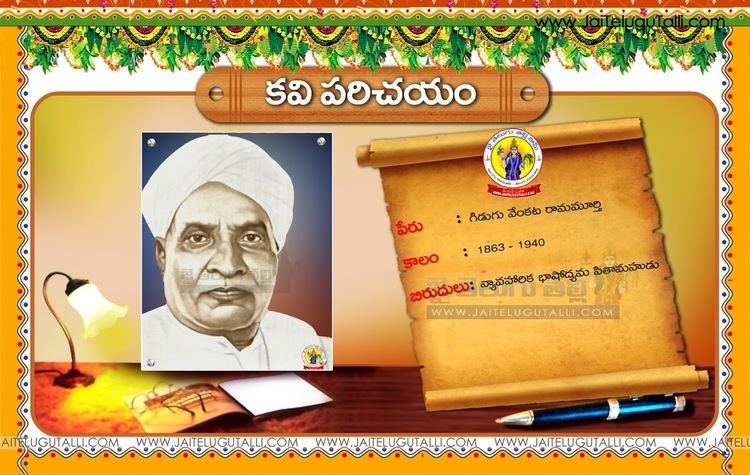
The language of the sasanas (inscriptions), the language loaded with Sanskrit diction of the kavyas, and the language spoken every day, were not the same. For many of the Telugu speakers themselves, kavya bhasha is mostly incomprehensible. The grandhika bhasha ("written language") then taught in schools and colleges did not promote the skills necessary either for understanding or communicating effectively in real life situations. The development of people depends on their language skills. When scholarship is limited to the creamy layers of society because of the difficulty in learning language, the rest of the society is denied access and opportunity for development. Gidugu was an eminent language visionary. As a pedagogue he was decades ahead of his time. He recognized the primacy of oracy and the efficacy of the by now accepted 'direct method' of language teaching. For teaching Telugu, he wanted the spoken language to be the medium of instruction. This engulfed him in a war with the orthodox Sanskrit-educated pundits, which sometimes turned vitriolic. Due to Gidugu's tenacity and commitment, sishta vyavaharika (standard, current, and spoken language) gained currency and acceptance. To drive home his pedagogic, literary, humanistic, and modernizing thoughts, Gidugu boldly, untiringly and persuasively used the press, publications, the public platform, social discourse, and even pamphleteering, never once losing his cool and objectivity in argument. Between 1910 and 1914 he went about talking, arguing, convincing, making rapid strides even in the face of stiff opposition. Balakavisaranyam, Gadya Chintamani, Andhra Pandita Bhishakkula Bhasha Bheshajam and Vyasavali are his efforts to convince and plead with his opponents to see reason. Ramamurthy saw in his own lifetime people seeing his point and rallying round him. Kandukuri Veeresalingam Pantulu founded Vartamana Vyavaaharikandhra Bhasha Parivartaka Samajam and as its president endorsed Gidugu's views. Andhra Sahitya Parshat, Kakinada, withdrew from the fight in 1924. In 1933, Abhinavandhra Kavi Panditasabha, under the chairmanship of Chilukuri Narayana Rao Pantulu, resolved that modern vyavaharika must be the medium of instruction. In 1936 a journal was started publishing articles in the current cultivated Telugu. In 1937, Tapi Dharma Rao started a periodical in this style. The government and the universities had to listen to reason. Today, the cultivated current Telugu (J. a. Yates's phrase) is the medium of instruction, of examination, and even thesis writing.
Works
Honors
Research on Gidugu's Work
A number of scholars, linguisticians, and teachers have discussed Gidugu's work and wrote voluminously about his achievement. Most important among them are
